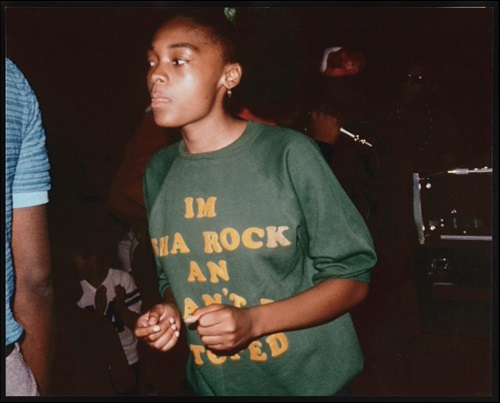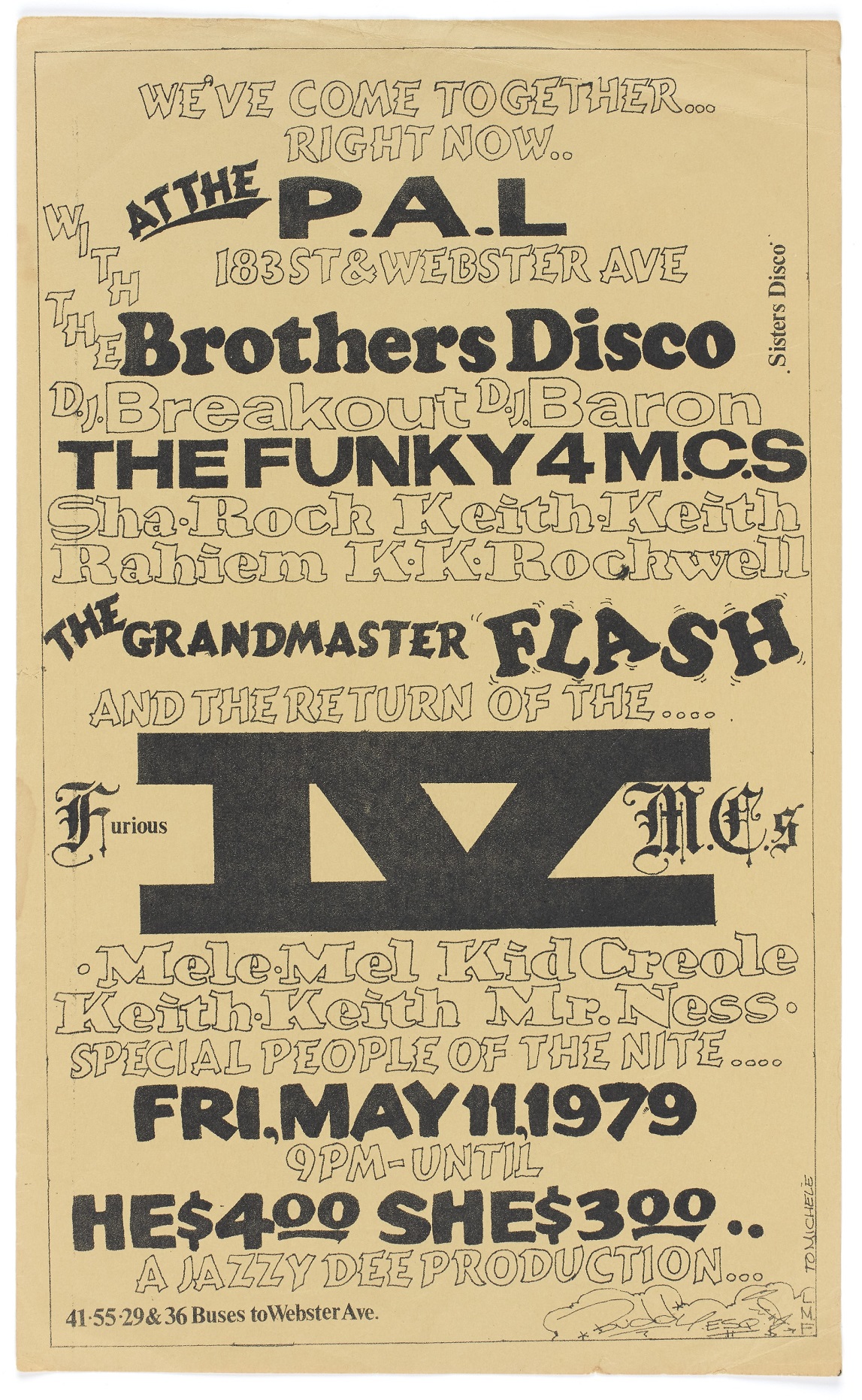Background
The music genre and art movement of hip hop developed in New York City, particularly the Bronx, in the 1970s. The city’s economy was in decline. High unemployment and the crack-cocaine epidemic led to a rise in crime. The government provided little funding for housing, leaving urban residents to live in decaying apartment buildings. Many young Black and Puerto Rican New Yorkers grew up in these challenging conditions. They often expressed their frustration with urban life into creativity, leading to hip hop music, breakdancing, and graffiti art.
Sharon Green grew up in the Bronx and first entered the hip hop scene in 1976 as a B-girl. She took on the rap name MC Sha-Rock and was a member of the hip hop group the Funky Four. Sha-Rock briefly left the group in 1979 and was replaced. On her return several months later, the group rebranded as the Funky 4 + 1 (she was the plus one). They were the first hip hop group to perform on television, featured as the musical guest on the television comedy show Saturday Night Live in 1981. Sha-Rock was the first female MC of a hip hop group and received the nickname “First Lady of Hip Hop.” She was known for her ability to rhyme and her technological innovation with the use of an echo chamber, which became common in hip hop.
About the Document
The photograph shows MC Sha-Rock at a concert in 1980. She wears a green shirt with yellow letters that spell out “I’m Sha-Rock and I can’t be stopped,” her signature rap.
The flyer advertises a 1979 rap battle event in the Bronx. Because hip hop music was not mainstream, hand-drawn flyers were the primary way in which hip hop musicians promoted their events. It advertises the Brothers Disco, the Funky Four, and Grandmaster Flash.
Vocabulary
- B-girl: A female breakdancer.
- breakdance: An athletic style of dance, developed in the Bronx in the 1970s by primarily Black and Puerto Rican street dancers alongside hip hop music.
- echo chamber: An instrument that repeats words and phrases of rappers for emphasis.
- MC: Acronym for Master of Ceremonies and also written as emcee. A vocalist who raps over music.
Discussion Questions
- Who was MC Sha-Rock and what contributions did she make to hip hop culture?
- How did hip hop develop in the 1970s? What influenced its development in the Bronx?
- What challenges might MC Sha-Rock have faced as a woman in a male-dominated environment?
- How can you still find MC Sha-Rock’s influence in hip hop today? Why is it important to remember contributions of female artists like her?
Suggested Activities
- Watch a 2021 interview with Sha-Rock here (the first half of the video covers Sha-Rock). How did living in the Bronx influence Sha-Rock? How does she reflect on her experience as one of the first female MCs? How did she influence other female rappers?
- Watch the Saturday Night Live performance of the Funky 4 +1. Why was this a historic performance? How do you think young girls at home felt watching Sha-Rock perform as the group’s lead?
- Lead a close analysis of the flyer. How was it made? Who performed at the event? Who was the intended audience? What does this flyer explain about hip hop culture in the late 1970s?
- For a larger lesson on music in this period, teach this resource alongside a testimony on music censorship and the life story of Dolly Parton.
- For a larger lesson on the contributions of Black women during this period, combine this resource with Anita Hill’s testimony, punk feminism, and the life stories of Audre Lorde, Lois Curtis, Barbara Lee, and Miss Major Griffin-Gracy.
Themes
AMERICAN CULTURE








